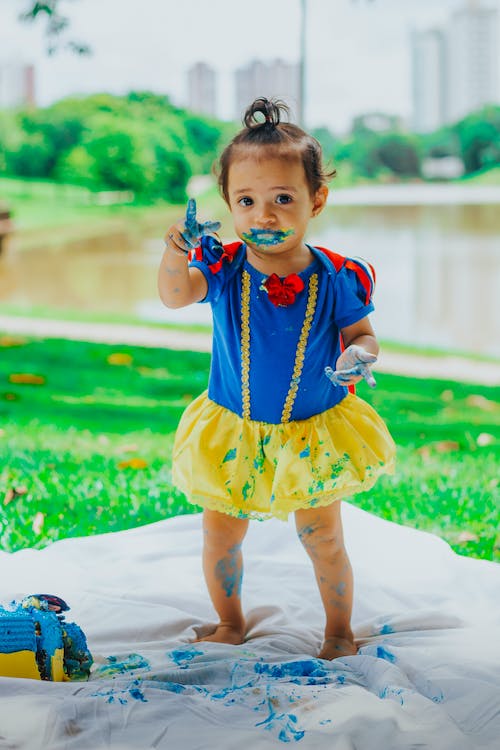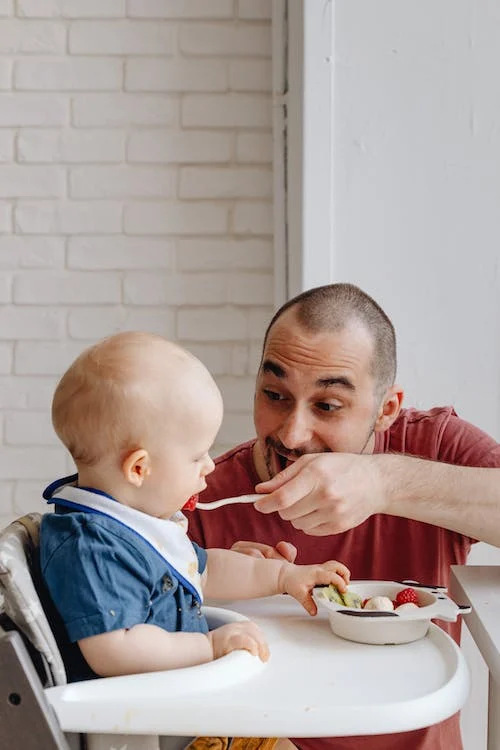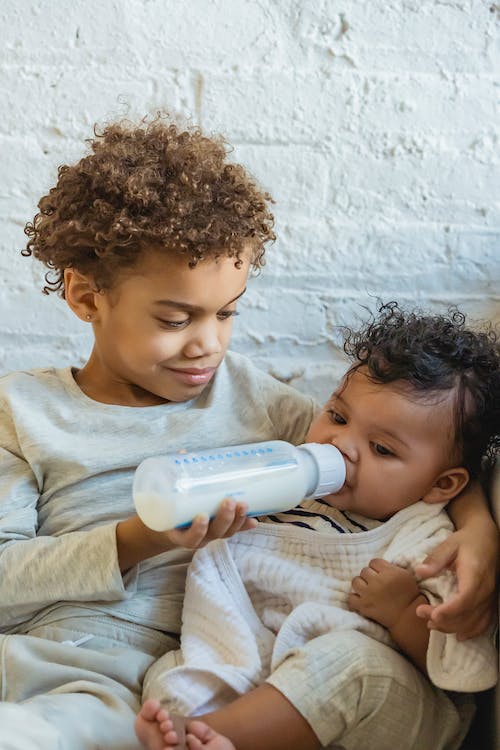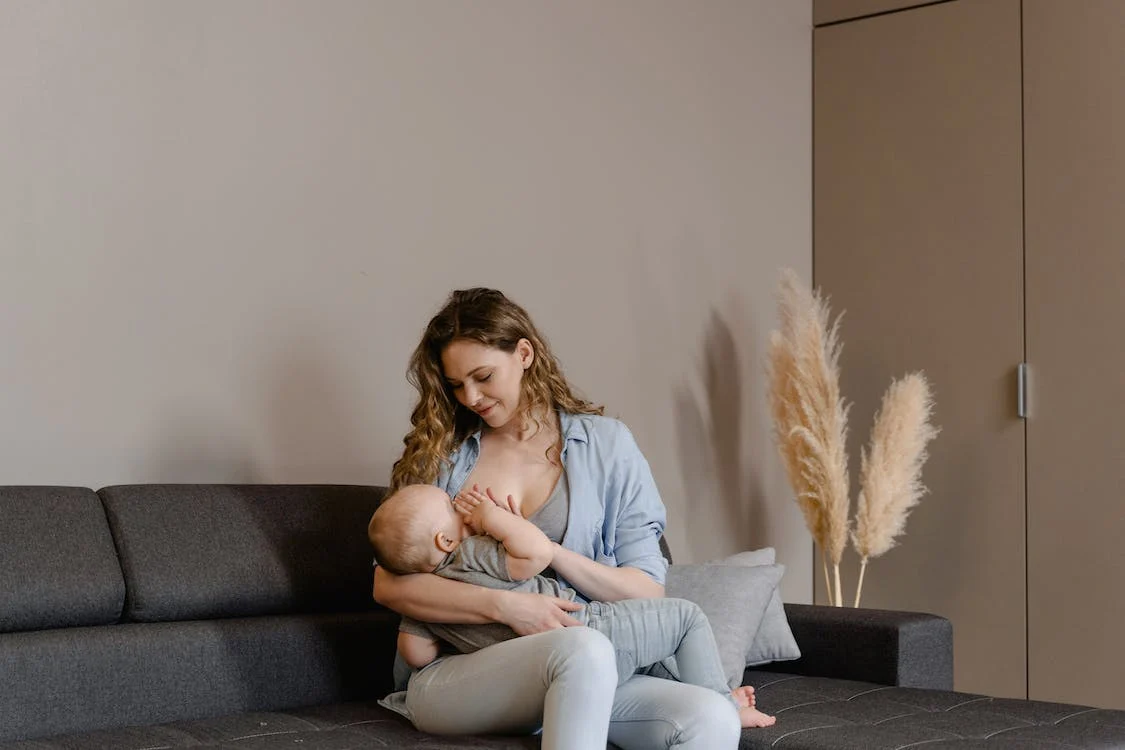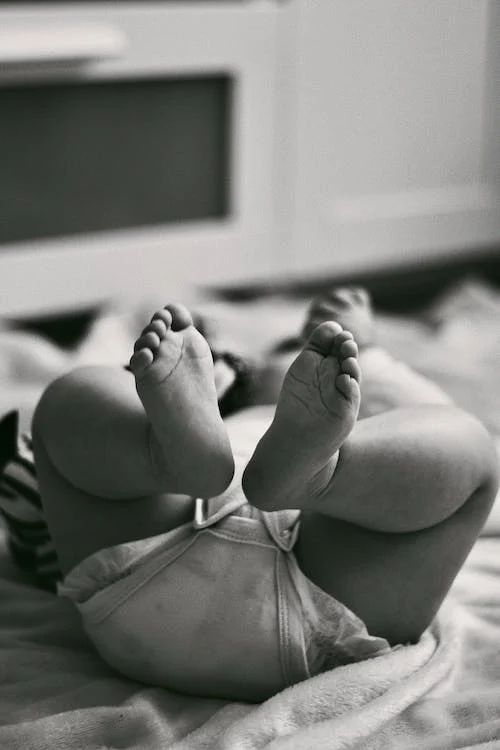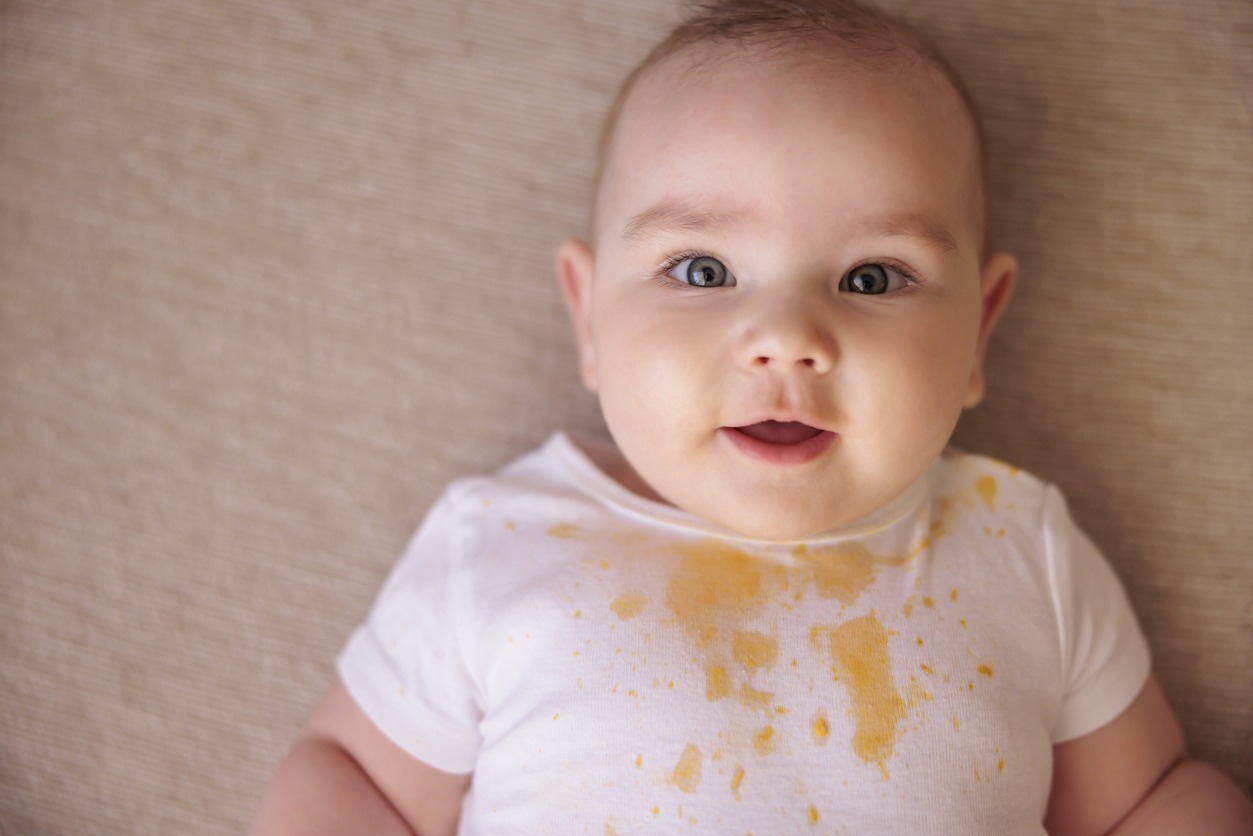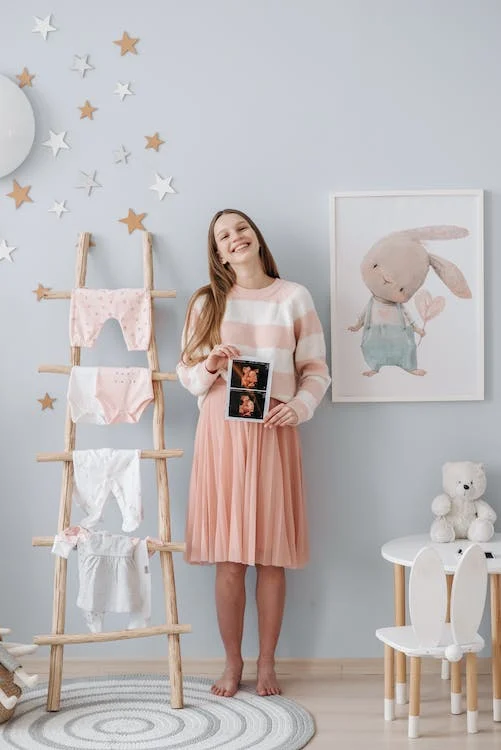All parents know how messy feeding time can be, and although both types of stains are made of proteins, cleaning up breast milk stains is less complicated than cleaning up baby formula stains. Both can be cleaned using the same techniques; however, formula stains might need to be cleaned again or taken to a dry cleaner. Children frequently crawl, spill food, throw up, or urinate on clothing, which makes the dress readily soiled and ruined. Many parents clean their baby’s clothes with bleach or laundry detergent. But these things can harm the skin and health of their unborn child. So, how can you eliminate yellow stains while caring for your baby’s delicate skin?
After washing, residue might still build up and adhere to clothing, leaving yellow stains. It becomes slightly yellowish with time. Why does infant clothing get yellow stains? The most common causes of unpleasant yellow stains on your baby’s clothing are stains from food and milk. Baby consumes and drink food and milk that has been spilled on clothing or gets stuck in their crawling path, leaving yellow stains on their clothing. Parents using bleach on their children’s clothing can also be why infant garments are yellowing. The case stems from a chemical interaction between the clothing’ fibers and the chlorine bleach. The fibers turn yellow when bleach starts to degrade them. Parents can find answers to inquiries about this topic in this article.
Common Stains on Baby Clothes
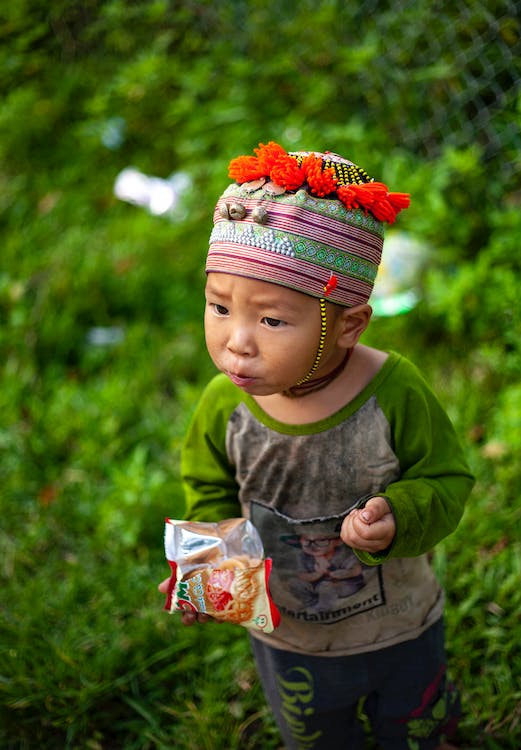
One quickly understands that immaculate apparel is a thing of the past when one becomes a parent. Babies must consider how costly or difficult it can be to clean their cute clothes. Eating, sleeping, urinating, and pooping are their top priorities. Spit-ups, blowouts, and stains are inevitable with these activities. Let’s discuss the many techniques for removing typical stains from your baby’s clothes.
1. Infant Food Stains
If your precious baby is older than six months and has begun to feed, you are aware that in the beginning, they don’t get much food in their mouths. Food stains are regrettably unavoidable. Here’s what to do. First, rinse it in cold water, add a little liquid laundry detergent, let it sit, and finally put it in the washer. Try adding a natural stain remover to stains that are difficult to remove, like hello beets, and let it sit before washing.
2. Infant Formula Stains
You should move quickly since formula leaves extremely durable stains on clothing. As soon as possible, rinse with cold water, scrub with a gentle brush, spray on a stain, let it stay for at least eight hours, and then wash.
3. Breast Milk
Rinse the affected area with lukewarm water and dab dry to remove those stubborn stains from breast milk. Old stains should be pre-treated with a natural stain remover, scrubbed in with a gentle brush to work it into the fibers of the fabric, allowed to sit for at least eight hours, then washed, and then given an additional rinse cycle to ensure that all the cleaning solution has been removed from the clothing.
4. Urine
Have you noticed that your baby’s clothes have yellow stains after being removed from the dryer? Their urine might be the reason for that. This is how to handle it. Fresh urine stains should be immediately rinsed with cold water before being placed on a typical hot water wash cycle. If the stain is older, apply a stain remover, let it sit, and then use hot water in the washing machine to wash the clothing. If the stain persists, apply more stain remover until the area is stains-free.
5. Poop
The most difficult stains to remove from your baby’s clothing are those caused by their feces. Also, blowouts are unavoidable, so understanding the appropriate treatment for the afflicted area is crucial. Your kid will have blowouts eventually. As usual, rinse the soiled area with cold water before gently brushing dish soap into the cloth’s fibers. Repeat rinsing with cool water until the stain starts to remove. You can also add a stain remover and leave it for stubborn stains. After that, turn on your washer on high and insert it.
6. Baby threw up
Spit-up stains from a baby are inevitable and frequently occur when you are out and about. If your little child spits up, blot it with lukewarm water and a fresh cloth or paper towel, use a gentle brush to remove any remaining residue, use a stain remover if necessary, let it sit, and then wash it regularly.
7. Oils and Creams
If you use baby oil, you know it frequently leaves oily stains on your child’s clothing. Before washing, consider dabbing the stain with a small amount of talc. This powder will absorb oil.
Tips on Getting Rid of Stains from Baby Clothes
Finding the stain will be the first thing you should do. Is it from excrement, pee, formula, or breast milk? Once you are aware of the source, follow these simple instructions. Even if it could be challenging to prioritize when caring for your infant, the secret to getting rid of formula stains is treating them as soon as possible.
1. Getting Rid of Yellow and Old Stains in Infant Clothing
Any yellow stains that appear old on your baby’s clothing are most likely from formula, or breastmilk spilled on them in the past and dried up. The cause of these stains is milk proteins that remain on the cloth even after several washings. Regretfully, these stains are resistant to most washing techniques used alone. You’ll need natural stain removers like hydrogen peroxide, baking soda, lemon juice, or white vinegar to get rid of them. Use one of these liquids to both bathe and brush the afflicted region. After that, give the items a normal wash and let them air dry for a few hours in the sunlight. This will eradicate all remaining bacteria and germs.
2. Cleaning Baby Clothes of Formula and Breast Milk Stains
White vinegar can remove more recent milk and formula stains by soaking or brushing the stain for a short while, much like you would with yellow and old stains. An additional step suggested is to soak the garments in cold water for a minimum of fifteen minutes before using natural stain removers by brushing them in. The better, the longer you soak. This aids in the breakdown of the proteins and carbs that would otherwise remain in the formula or breastmilk, resulting in the old yellow stains.
3. Cleaning Food Stains Off of Infant Clothes
When your baby is first introduced to solid food, their clothes will begin to show food stains, especially if they do not yet have the motor abilities to control where the food goes. More difficult to remove than stains from formula and breast milk. If the stain is visible immediately, remove the food particles or stains from their clothing using tissue paper and wipes or alcohol. After rubbing it away until it vanishes, immerse the clothing in cold water. If you missed the window of opportunity, you should still soak it in cold water for the entire night. Use one of the all-natural stain removers and rub or soak it for a few minutes in the morning.
4. Getting Rid of Poop Stains on Infant Clothes
One of the annoyances that moms will inevitably have to deal with is poop stains. The best way to reduce them is to treat them as soon as you notice them. The most reliable indicator that anything is wrong is smell. If you notice it, change your baby’s clothes right away and measure how much they’ve pooped. Use baby wipes to reduce the quantity of solid and liquid excrement on your baby’s clothing, and then run cold water over the affected region to remove the poop. After a few minutes of soaking in natural stain removers like vinegar, wash the garments under hot water right away.
5. Remove Urine Stains from Infant Clothes
The other unavoidable mishap you’ll face is pee stains. As with feces stains, the first step in removing them is to remove extra waste with a brush or baby wipes. Use baking soda or other natural stain removers to pre-treat the problem area after removing excess waste. Next, rinse it before putting it in the washing machine. Dry the fabric in the sun for at least several hours to ensure the color doesn’t change. Additionally, doing this will get rid of any leftover germs or viruses.
6. Getting Rid of Baby Clothes Greasy Stains
Greasy food stains and greasy streaks from skin creams, petroleum jelly, and baby oil can cause annoyance and make cleaning clothes challenging. In this situation, baby powder is your best friend. Apply a generous amount to the affected region, removing any remaining powder once the oil has been absorbed. Once most of it has been eliminated, apply powder to the stain and let it sit for around ten minutes. After that, remove any last bits of dirt with a brush, soak the garments in natural stain removers, and wash the clothes normally.
7. Eliminate the stain as quickly as you can
Taking quick action is the most excellent method to guarantee that a stain won’t last. Take it off and get to work right away if your infant pooped in their trousers or spilled milk all over themself. Eliminating as much of the substance causing the stain as possible is crucial. This holds whether food particles, excrement stains, or milk spills end up on their clothing. This ensures the liquids don’t dry up and permeate the fabric for an extended period. For example, the grease will only spread slightly if you quickly remove a food particle.
8. Separately wash the stained clothes from the other clothes.
In addition to avoiding contaminating your baby’s clothing, you should wash them separately since you may need to use different liquids or materials that are less abrasive on delicate fabrics or more successful at eliminating stains. For instance, you should wash the baby’s clothing separately from other items that are expressly forbidden to be treated in bleach if you’re washing it. Read the care directions thoroughly before using liquid on your baby’s clothing. The last thing you want in the washing machine is for the cloth to shrink or get damaged.
9. When Using Just Detergent, Raise the Wash Temperature
Use higher wash temperatures if you’re not adding bleach or other laundry boosters to your washing machine. Compared to lower wash temperatures, higher wash temps kill more bacteria and viruses and enter the fabric more deeply. To find the best way to wash the baby’s clothes, read the washing directions on the garments. This is because some textiles shrink in hot water washing.
10. Discover the Best Pre-Wash Tips
You should take a more unusual technique when some stains, including those from urine or feces, become embedded in the cloth. When a mother needs to get rid of pee, she should get a big bowl she no longer uses for cooking. Combine equal parts rubbing alcohol and cold tap water. Give the clothing 15 to 20 minutes to sit in the mixture. You can put it in the washing machine with hot water if the stain begins to disappear from the cloth. The heat will aid in the destruction of bacteria. Try using vinegar and water solution in your bowl if you have a stubborn pee stain that won’t go away.
Safe Cleaning Materials for Removing Stains on Baby Clothes
Using potent stain removers that include many unidentified chemicals on your baby’s clothing is unnecessary. There are plenty of natural ways to do the task, which are indeed safe for your babies.
1. White Vinegar
The fact that a common cooking ingredient may also be used to remove stains shocked me. Applying a generous amount of white vinegar to the discolored area and letting it sit for a while is the simplest. Wash the garments as usual after a short time to remove the stain. If the stain is tough to remove and looks like excrement, immerse the dirty clothes in a pail of water with a few teaspoons of vinegar and detergent. Leave the clothes in the water overnight before rewashing them.
2. Lemon Juice
This is yet another well-liked, all-natural method of gently and successfully removing stains. Just cut a lemon in half and squeeze to get all the juices into a container. After that, soak the stained area in your juice for ten minutes or until the stain lightens or is gone. The acid in the lemon juice will break down the stain molecules. After the solution has lessened the stain, wash the items in cold water with white vinegar or a baby-safe detergent.
3. Baking Soda
One of the many uses for baking soda, a miracle powder, is its stain-fighting capabilities. I attempted to create a paste by combining a small amount of vinegar with baking soda, which I then used to cover the discolored areas on the baby’s garments. After I left it set for a while and washed it, the stains came off quickly. When you don’t have a persistent stain and don’t want any chemicals in the mixture, this mixture works like magic.
4. Hydrogen Peroxide
Hydrogen peroxide is a potent cleanser that poses no risks when used correctly. The ideal hydrogen peroxide solution to use on infant garments contains three percent. This is due to its natural bleaching agents and antiviral and antibacterial qualities. Harder stains can be removed entirely using it without causing any harm to the clothing. Before washing, soak your baby’s clothes in a three percent solution for five minutes. Take care not to keep it on for too long, since this could cause the clothes to get discolored.
5. Sunlight
Our friend, the sun is the best stain remover—free and abundant. It can be surprisingly effective to leave stains less obvious and eliminate germs for an hour or two in the sun. However, remember that hanging baby garments up to dry is not a substitute for washing them. Poop and protein stains are examples of stains that are difficult to remove even after washing. After washing, sunbathing diapers can help remove any remaining stains if you use cloth diapers. The sun can remove stains from milk that may have been brought on by formula or breastfeeding. If this type of stain remains on clothing for an extended period, it may turn yellow. Sunlight can aid in fading these stains.
Conclusion
The first year of life is very costly. Infant apparel is one of the most significant expenses for new parents in their first year of parenting. Your kid will grow, even if your baby shower yields an abundance of goods. Staining and damaging buttons and zippers can force you to change your baby’s clothes sooner. You may prolong the life of your current baby’s clothing by purchasing high-quality goods and knowing how to clean various infant stains from clothing. Additionally, you’ll make it simpler to wash your child’s clothes—regardless of the stains that may arise.

